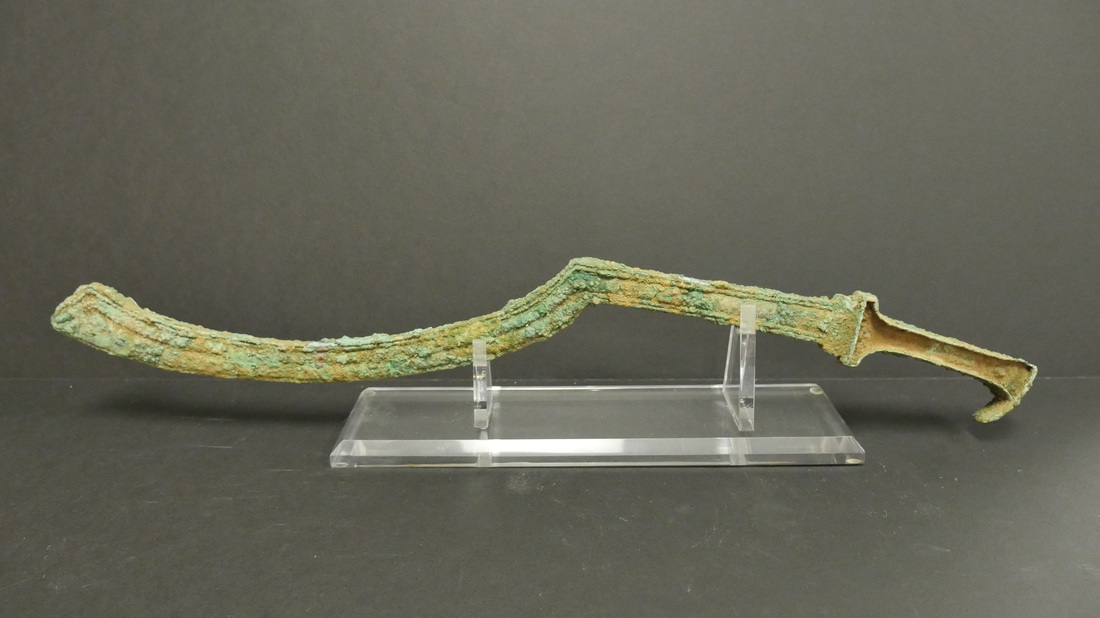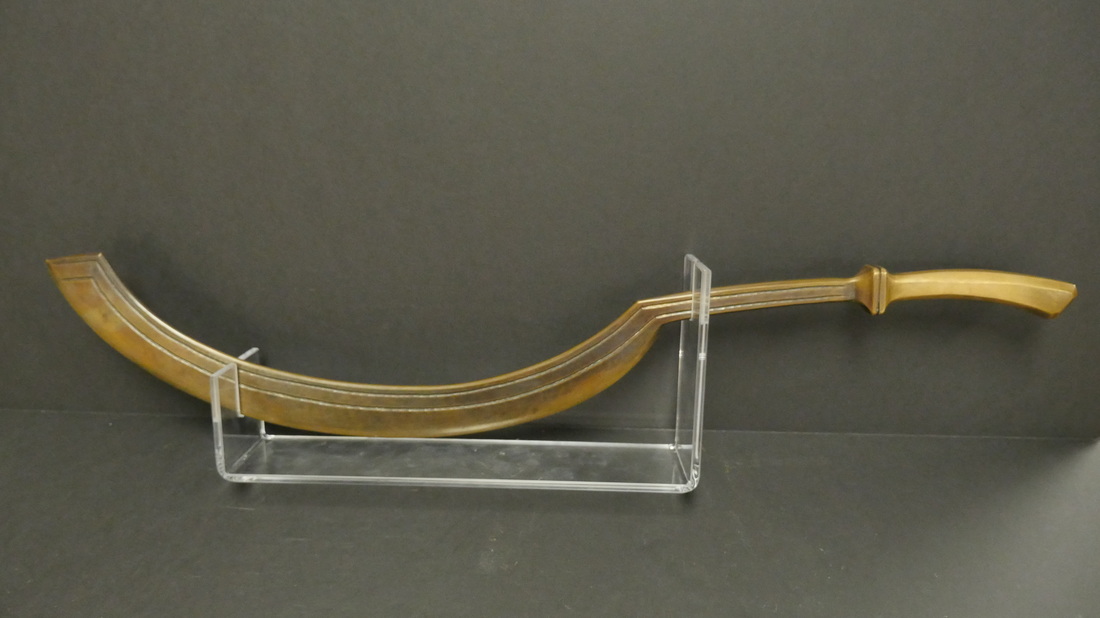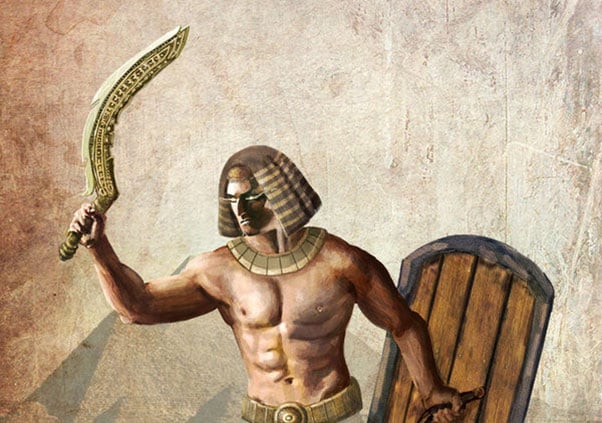Egypt was one of the earliest of the great civilizations, preceded only by a few before it, a sprawling economic and military kingdom lead by a monarch that stood as the dominant force in the north of Africa for 2 millennium. That legacy includes policies, wars, and history that have been, and will continue to be debated and discussed by scholars for generations to come. But the one thing that is fore sure in that history is that it was accomplished with a robust and formidable military for its day. As I have said before, the spear was the backbone of the army, cheep, effective and possess of good reach, it was the weapon of choice for centuries before the first tribes of Egypt, and continued on as such until the age of gunpowder in the seventeenth century.
As simple and plentiful as the spear may be, the Khopesh elite within the Egyptian military and aristocracy was another mater.
The khopesh first first forged in bronze, sometime before 2500BCE. Typical examples look to be hook shaped, and between 18 and 25 inches long. The outer edge of the curved blade was ground and honed sharp, while the inside was blunt. Historically, the weapons's life firmly frames the Middle Kingdom period of the Egyptian monarchs (2134–1690 BC), with its roll as an implement of war likely in decline following the reign of Merneferre Ay (1684–1661 BC). Some later examples have been found in iron, but by then, newer blades were coming to prominence as well. Aside from Egypt, the Khopesh was also used by Kingdom of Israel and Judah, and the Canaanite city-states, meaning that a great many of the narratives from Jewish texts, the Bible, and the Quran, would have seen principle military figures holding not the straight-bladed weapon of later times, but the curved shape of a Khopesh.
 |
| 18th century BC khopesh found in Nablus; the blade is decorated with electrum inlays. |
Though it resembled a farmers sickle at first glance, archaeologists believe it actually derived from an epsilon type axe. The dense, and relatively soft bronze metal would need weight behind an edge to carry a blow, and the khopesh'es shape would put enough mass behind the striking edge of lay open an unarmored opponent. Given the weapon's weight, forward heavy balance, and construction, killing blows were likely either deep lacerations into organs, and arteries or smashing strikes into the skull or head of an opponent. Its ability to penetrate bone is debatable, but not impossible. Lateral strikes, however, would undoubtedly be able to open up the abdomen, or split ribs and lay open chest and lung tissue.
 |
| The evolution of the Khopesh from the Epsilon (left). |
Examples found in royal tombs, including two examples found in the tomb of Tutankhamun, have shown more detail than most, and no edge, indicating that they were ceremonial weapons, further accenting the elite status of the item itself, and the people who carried it. While bronze does not hold an edge as well as iron, or steel, metal armor would not become common on the battlefield for centuries after the Khopesh's retirement in the mid 1300s BCE. The weapon's lethality in a fight of the day can not be doubted, and even as a blunt tool, there is no doubt that it could break limbs, or crack skulls. Militarily, the Khopesh was a close-in weapon that was likely used with a shield, or some sort of off-hand blocking item, like a staff, or a spear. The curved shape, and single edge are believed to lend themselves well to binding of an opponents limbs, suggesting sword training that might include grappling with, or high-centering an opponent in order to knock him to the ground.
 |
| Late style Khopesh from LIBERTY BIBLICAL MUSEUM |
In its earliest uses, sometime around 2600 BCE or before. It was a formidable weapon, likely recognized, and respected across the Mediterranean and north African worlds. By the reign of Tutankhamun (1334 – 1325 BCE) however, newer, and arguably better weapons had developed within the military arm of the Egyptian army, and the Khopech was likely seen as a respected, and traditional weapon. While there is no doubt the weapon was capable and deadly in its time, newer, and better tools had come.
 |
| Historical Replica from LIBERTY BIBLICAL MUSEUM |
 |
| Artistic depiction of an Egyptian soldier of presumable rank or status. |
#Swordsunday is intended as a fun and educational series of posts for the enjoyment of readers.
His Lordship Ivo Blackhawk
Kingdom of Ansteorra
"Long Live the King!"
His Lordship Ivo Blackhawk
Kingdom of Ansteorra
"Long Live the King!"
No comments:
Post a Comment